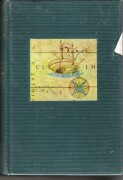


This incident, which caused the Spanish to name these islands Islas de los Ladrones (Islands of the Thieves), meant that more men would die from malnourishment and scurvy before a decent amount of food could later be obtained in the course of more friendly encounters, in the Philippines. This prompted Magellan to order a punitive landing, and during the skirmish that followed, his men were able to recover their boat but not to grasp much food before falling back to the ships and sailing away. Before Magellan could make a landing at Guam, several small boats sailed toward the Spanish ships, and a multitude of men and women boarded and skillfully stole everything that they could lay their hands on, including one boat that was fastened to the side of one of the caravels. The first encounter of this starving crew with a group of Asians was not promising. In truth I believe no such voyage will ever be made again. Had not God and His blessed mother given us such good weather we would all have died of hunger in that exceedingly vast sea.

The gums of both the lower and upper teeth of some of our men swelled, so that they could not eat under any circumstances and therefore died. But above all the other misfortunes the following was the worst. Rats were sold for one-half ducat a piece, if only one could get them. We drank yellow water that had been putrid for many days. We ate biscuit, which was no longer biscuit, but powder of biscuits swarming with worms, for they had eaten the good (it stank strongly of the urine of rats). We were three months and twenty days without getting any kind of fresh food. Yet the latter, harrowing experience was crystallized by Magellan’s greatest admirer, Antonio Pigafetta (c. Brave and ruthless, Magellan was not lingering on the price that the enterprise had cost up to that point-a mutiny by Spanish pilots who hated their Portuguese leader, the loss of two ships, and the death of many men during the crossing of a bay that turned out to be an uncharted ocean. Footnote 2 Their captain, Ferdinand Magellan (1480–1521), had found the strait for which Columbus and a host of other explorers had groped along the American coasts for almost thirty years. Footnote 1 With gums swollen by scurvy, and with eyes momentarily forgetful of spices, scanning the coastline of scattered islands for food, these ghostly figures seemed more the unhappy prisoners than the masters of the ships that carried them.

Such must have been the appearance of the first Europeans to ever enter Asia from the East, having crossed the largest stretch of water on the planet-the Pacific. There is empathy rather than “othering,” but this is not in contradiction with Pigafetta’s cultural and religious identity. On the one hand, his guided curiosity usually avoids judgments about the strange societies that he observes on the other hand, the importance of chivalric values demonstrates the resilience of cultural backgrounds and locally rooted meanings even at the moment of encounter. Pigafetta portrays the Philippines, the Moluccas, and other islands from the perspective of an intellectual knight, self-consciously shaping his own character not only in the past, but also in the future. The contribution discusses Pigafetta’s narrative after the finding of the Strait, fleshing out both the colorful images of Asian rites and the presence of Christian chivalry in the text. This essay focuses on early Iberian Asia and explores the theme of curiosity in the Asian sections of Antonio Pigafetta’s First Voyage Around the World, an account of the Magellan expedition.


 0 kommentar(er)
0 kommentar(er)
